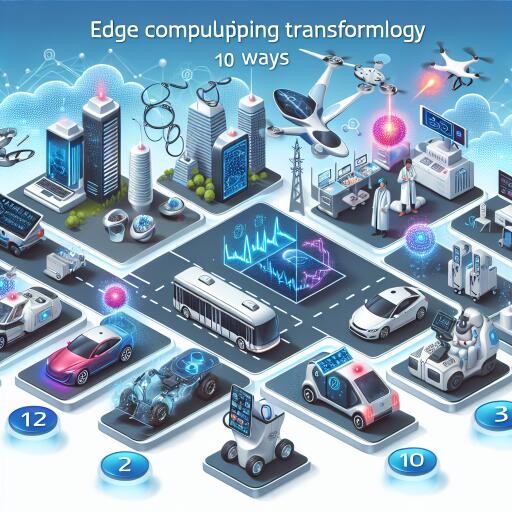How Edge Computing Transforms Technology in 10 Ways
With the rapid advancement of digital technologies like 5G, artificial intelligence (AI), and machine learning, a new player is making waves in how we process data at lightning speeds: edge computing. This innovation is reshaping technology by decentralizing data processing, pushing it closer to where data is generated. Let’s dive into the transformative power of edge computing across various sectors.
Edge computing is revolutionizing the way devices communicate and process information. By moving computation and application processes to local servers, edge computing enables devices to perform tasks using nearby resources rather than relying on distant central networks. This shift is particularly transformative in settings requiring real-time data processing, like hospitals monitoring patient data instantly or factories where machinery communicates seamlessly to optimize production.
1. Enhanced Connectivity
Processing data closer to its source dramatically reduces delays and congestion, leading to faster loading times, response rates, and overall connectivity. This is a game-changer for applications requiring instant data processing, such as live-streaming or mobile gaming, where edge computing can facilitate quicker rendering and graphics display.
2. Revolutionizing User Engagement
From augmenting reality in museums to enhancing interactive experiences in entertainment, edge computing is setting new standards for engagement. It allows for the seamless handling of graphics and data, creating immersive experiences that blend digital and physical worlds effortlessly.
3. Advancements in Manufacturing and Utilities
Edge computing is a boon for industries like manufacturing and utilities, where it enables real-time monitoring, process automation, and predictive maintenance. This not only improves safety, efficiency, and productivity but also significantly reduces downtime in operations.
4. Enabling AI and Privacy
Edge computing plays a crucial role in scaling artificial intelligence applications while maintaining privacy. It supports the processing of vast datasets locally, allowing for real-time analytics and decisions without compromising sensitive information.
5. Powering the Internet of Things (IoT)
The IoT ecosystem, consisting of interconnected devices and sensors, thrives on the capabilities of edge computing. It enables devices to process and act on data locally, enhancing responsiveness and functionality, from smart homes to responsive automotive systems.
6. Transforming Healthcare
In healthcare, edge computing facilitates quicker, more efficient patient monitoring and data sharing. By processing patient information on-site, healthcare providers can offer enhanced care quality while adhering to strict privacy regulations.
7. Smart City Innovations
Edge computing is instrumental in developing smart city infrastructure, from intelligent traffic management systems that reduce congestion to environmental sensors that monitor climate conditions, facilitating sustainable urban living.
8. Enhancing Data Security
With its decentralized nature, edge computing offers improved security over traditional cloud-based systems. By processing data locally, it minimizes vulnerabilities associated with data transit, offering robust protection for sensitive information.
9. Remote Operation Reliability
For operations requiring low latency, like remote surgery or drone control, edge computing ensures data is processed rapidly near its source. This enhances the reliability and responsiveness of remote operations, enabling precision and efficiency.
10. Bridging Connectivity Gaps
Edge computing can extend digital services to underserved areas by deploying micro data centers that provide local processing capabilities. This democratizes access to the internet and digital services, fostering greater inclusivity and empowerment.
As we navigate the intersection of edge computing with leading-edge technologies like 5G, AI, and the IoT, it’s clear that edge computing is not just a supporting player but a transformative force in its own right. It’s reshaping how we interact with technology on a fundamental level, promising significant improvements in efficiency, security, and accessibility. The integration of edge computing into our daily lives and industries is just beginning, with its full potential yet to be unleashed.








